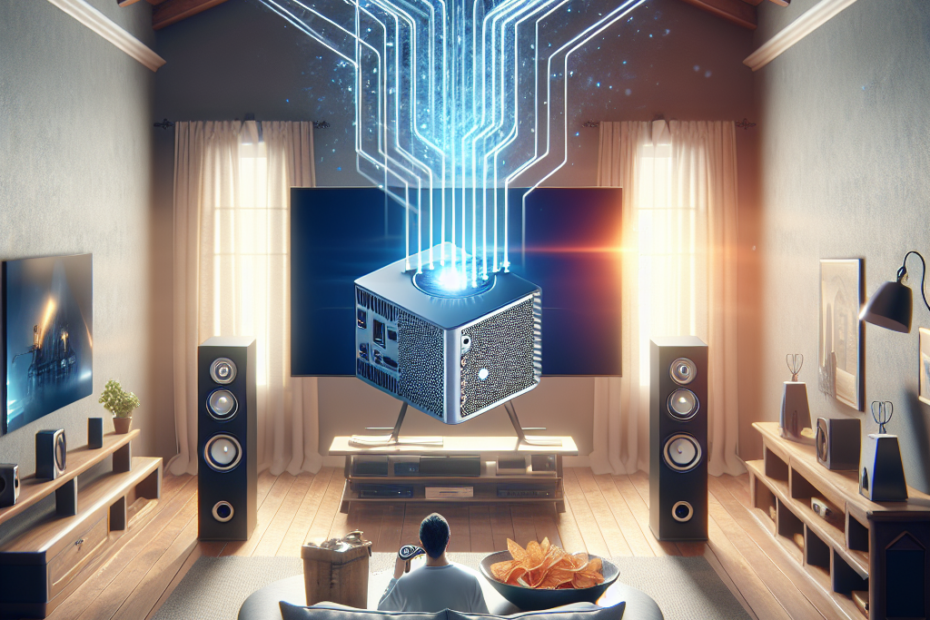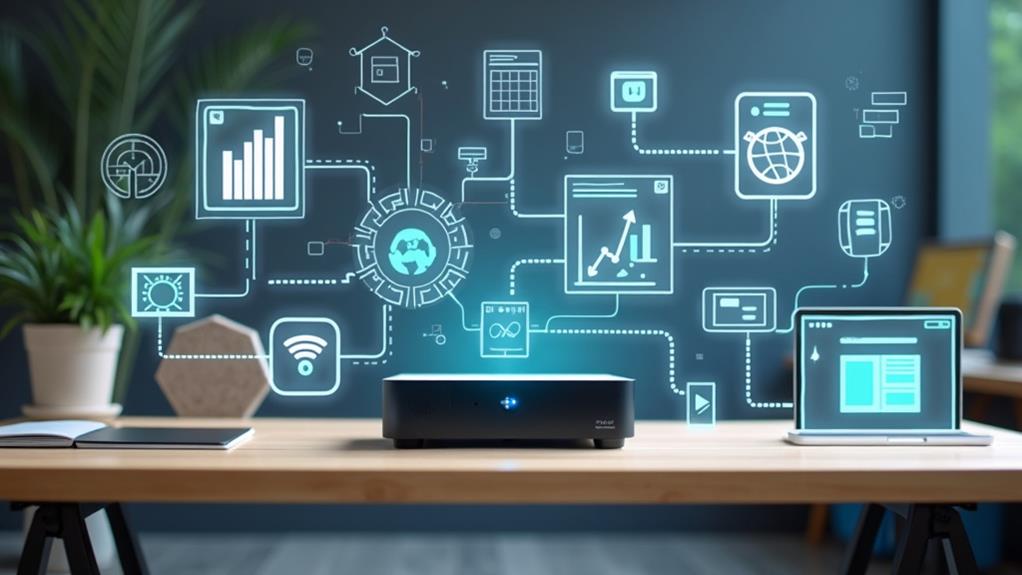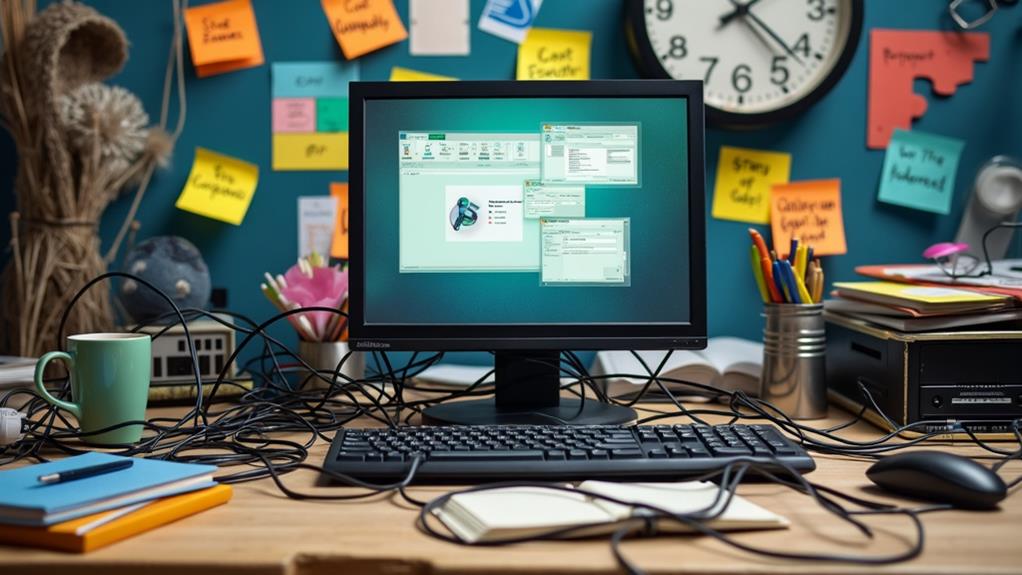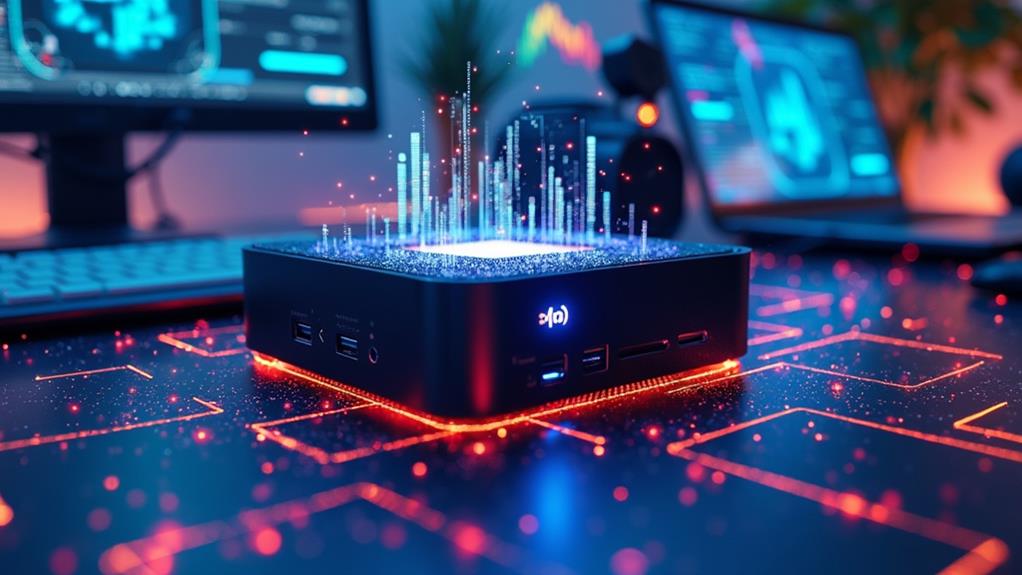



Connecting a Mini PC to your home theater system may seem like a challenging task, but it’s actually much simpler than you might think. With the increasing popularity of mini PCs, many people are wondering if they can integrate these compact devices into their existing entertainment setup. The good news is that yes, you absolutely can connect a mini PC to your home theater, opening up a whole new world of possibilities for streaming, gaming, and multimedia enjoyment. So, if you’re ready to take your home theater experience to the next level, let’s explore the seamless integration of a mini PC into your entertainment setup.
Understanding Mini PCs
What is a Mini PC?
A mini PC is a compact and portable computer that offers the functionality of a desktop computer in a smaller form factor. It is designed to be lightweight and space-saving, making it perfect for those who want a powerful computing solution without sacrificing space or aesthetics. Despite its small size, a mini PC can pack a punch in terms of performance, often capable of handling tasks such as multimedia streaming, web browsing, and even light gaming.
How does a Mini PC work?
Like any other computer, a mini PC is equipped with a central processing unit (CPU), memory, storage, and various ports for connecting peripherals. It operates using an operating system, such as Windows or macOS, enabling users to interact with the device through a graphical user interface (GUI). Mini PCs also come with built-in Wi-Fi and Bluetooth capabilities, allowing for seamless connectivity with other devices. These compact computers can be powered either through an external power supply or via USB power.
Benefits of Using a Mini PC
There are several advantages to using a mini PC, especially when it comes to home theaters. Firstly, their small size and sleek design make them blend seamlessly into any entertainment setup, without taking up valuable space. Additionally, mini PCs are energy-efficient, consuming less power compared to traditional desktop computers. This not only helps reduce electricity bills but also contributes to a greener environment. Furthermore, mini PCs are often more affordable than full-sized desktop computers, making them a cost-effective option for home theater enthusiasts. Lastly, their portability allows for easy relocation or integration into different parts of the home, providing flexibility in terms of usage.
Exploring Home Theaters
Brief Introduction to Home Theaters
Home theaters have become increasingly popular in recent years, offering a superior entertainment experience within the comforts of one’s own home. A home theater typically consists of a large television or projector screen, high-quality speakers, and an audio/video receiver. It aims to recreate the immersive experience of a movie theater, bringing the magic of cinema right to your living room. With advancements in technology, home theaters have evolved to support various media formats and provide an impressive audio-visual experience.
Components of Home Theaters
To set up a home theater, several components are necessary. Firstly, a high-definition television or a projector screen is required to serve as the display. This is complemented by a surround sound speaker system, which includes front, center, and rear speakers, as well as a subwoofer for low-frequency effects. An audio/video receiver acts as the central hub, connecting all the components and serving as an interface for audio and video inputs. Other accessories include a media player, such as a Blu-ray player or a streaming device, and comfortable seating to enhance the viewing experience.
Benefits of Home Theaters
Having a home theater offers numerous benefits. Firstly, it allows you to enjoy the latest movies, TV shows, and sports events from the comfort of your own home, saving you the hassle of going to a crowded cinema or sports bar. Moreover, with a well-designed home theater, you can enjoy superior audio and video quality, immersing yourself in the action and enhancing the overall viewing experience. Home theaters also provide a level of customization, allowing you to create a personalized space that matches your unique tastes and preferences. Whether you are hosting a movie night with friends or simply relaxing after a long day, a home theater adds a touch of luxury and entertainment to your home.
Basics of Connecting Devices to Home Theaters
Common Devices Connected to Home Theaters
When it comes to home theaters, there are various devices that can be connected to enhance the entertainment experience. One of the most common devices is a Blu-ray player, which allows you to watch movies in high-definition and enjoy immersive surround sound. Other popular devices include gaming consoles, cable or satellite boxes, media streaming devices, and even smartphones or tablets for streaming content or controlling the home theater system. Additionally, some people opt to connect their computers or mini PCs to their home theaters to take advantage of their multimedia capabilities.
How to Connect Devices to Home Theaters
Connecting devices to a home theater system is a relatively straightforward process. Most devices come with HDMI ports, which provide a seamless and high-quality connection for both audio and video signals. To connect a device, simply plug one end of an HDMI cable into the HDMI output port of the device and the other end into an available HDMI input port on the audio/video receiver or directly into the television or projector. In some cases, additional cables may be required if the device does not have HDMI output, such as optical cables for audio or component cables for video. It is important to consult the user manuals of the devices and the home theater system for specific instructions.
Key Considerations when Connecting Devices
When connecting devices to a home theater, there are a few key considerations to keep in mind. Firstly, it is important to ensure compatibility between the device and the home theater system. This includes checking for matching HDMI versions, resolution capabilities, and audio formats supported. Additionally, it is advisable to use high-quality HDMI cables to ensure the best possible signal transmission. Placement of the devices is also crucial, as they should be positioned in a way that allows for easy access and proper ventilation to prevent overheating. Lastly, organizing and labeling the cables can save time and prevent confusion when troubleshooting or adding new devices to the setup.
Can You Connect a Mini PC to Your Home Theater?
The Possibility of Connecting a Mini PC
Yes, it is indeed possible to connect a mini PC to your home theater. In fact, mini PCs can be a fantastic addition to your entertainment setup, offering a wide range of capabilities and versatility. With a mini PC connected to your home theater, you can enjoy a seamless integration of multimedia, gaming, web browsing, and productivity tasks, all from the comfort of your couch.
Requirements for Connecting a Mini PC
To connect a mini PC to your home theater, you will need a few essential components. Firstly, ensure that your mini PC has an HDMI output port, as this is the primary method for connecting it to the display. You will also need an available HDMI input on your audio/video receiver or directly on your television or projector. Additionally, a high-speed HDMI cable is required to transmit both audio and video signals between the mini PC and the display. Finally, it is important to have a compatible operating system and the necessary software and drivers installed on the mini PC to ensure optimal functionality.
Challenges in Connecting a Mini PC
While connecting a mini PC to a home theater is relatively straightforward, there may be some challenges that you might encounter. One common issue is compatibility, as different devices may have varying HDMI versions, resolution capabilities, or audio formats. It is crucial to ensure that the mini PC’s specifications align with the requirements of the home theater system to achieve optimal performance. Additionally, some mini PCs may have limited audio output options, which may require additional adapters or connections to route the audio signal to the surround sound speaker system. It is essential to research and understand the capabilities and limitations of your specific mini PC model to address any potential challenges.
Steps to Connect a Mini PC to a Home Theater
Acquiring the Necessary Equipment
Before connecting your mini PC to your home theater, ensure that you have all the necessary equipment. This includes a mini PC with an HDMI output port, an HDMI cable, and an available HDMI input on your audio/video receiver or display device. It is also crucial to have a compatible operating system and the required software and drivers installed on the mini PC for optimal functionality.
Preparing for Installation
Once you have gathered all the equipment, it is important to ensure that your home theater system is powered off and unplugged. This will prevent any potential damage to the devices during the installation process. Additionally, carefully plan the placement of the mini PC, considering factors such as accessibility, ventilation, and cable management.
Connecting the Mini PC
To connect the mini PC to your home theater, start by locating the HDMI output port on the mini PC. Insert one end of the HDMI cable into this port. Next, locate an available HDMI input port on your audio/video receiver or directly on your television or projector. Insert the other end of the HDMI cable into this port. Ensure that the connection is secure by gently pushing the cable.
Testing the Setup
Once the mini PC is connected to your home theater, power on all the devices and switch the input on your audio/video receiver or display to the appropriate HDMI input. You should now see the display of the mini PC on your television or projector screen. Test the audio output by playing a video or music file, ensuring that the sound is played through your surround sound speaker system. Make any necessary adjustments to the audio and video settings to achieve the desired quality and experience.
Configuring Settings for Mini PC and Home Theater Connection
Sound Settings
To configure the sound settings for your mini PC and home theater connection, access the audio settings on your operating system. Depending on the specific operating system, you can adjust options such as audio output device, volume levels, and audio formats. Ensure that the audio output is set to the desired device, such as your audio/video receiver, to route the sound through the surround sound speaker system.
Display Settings
To optimize the display settings for your mini PC and home theater connection, access the display settings on your operating system. Adjust the resolution, refresh rate, and aspect ratio to match the capabilities of your television or projector. Additionally, consider enabling any features, such as screen mirroring or extended display, based on your preferences and usage requirements.
Network Settings
To ensure a stable internet connection for your mini PC and home theater setup, configure the network settings accordingly. Connect the mini PC to your home network via Wi-Fi or Ethernet, depending on the available options. Access the network settings on your operating system to set up the connection, enter the appropriate credentials, and ensure a reliable and fast internet connection for streaming media, online gaming, or other internet-related activities.
Optimizing Mini PC for Home Theater Use
Choosing the Right Software
To optimize your mini PC for home theater use, carefully select the software that suits your needs. There are various media center software options available, such as Kodi and Plex, that offer a user-friendly interface and extensive customization options for organizing and streaming media. Additionally, consider installing gaming platforms or applications that offer a wide range of entertainment options. Choose software that is compatible with your mini PC’s operating system and provides seamless integration with your home theater setup.
Adjusting Display and Sound Quality
To achieve the best display and sound quality, adjust the settings on both the mini PC and the home theater system. Experiment with the resolution, color settings, and audio equalization to find the optimal balance for your preferences and the content you are enjoying. Additionally, calibrate the audio system by following the manufacturer’s instructions or using professional audio calibration tools. This will ensure that the sound reproduction is accurate and immersive, enhancing your overall home theater experience.
Ensuring a Stable Internet Connection
A stable and fast internet connection is vital for various home theater activities, such as streaming media, online gaming, and accessing online services. To ensure a stable connection, consider connecting your mini PC to your home network via a wired Ethernet connection for maximum speed and reliability. If using Wi-Fi, ensure that the mini PC is located near the wireless router or utilize Wi-Fi extenders if needed. Additionally, configure your network settings to prioritize the mini PC’s bandwidth for uninterrupted streaming and gaming experiences.
Exploring Use Cases for Mini PCs in Home Theaters
Streaming Media
One of the most popular use cases for mini PCs in home theaters is streaming media. Whether it’s movies, TV shows, or online videos, a mini PC can serve as a media center powerhouse, capable of handling various streaming platforms and formats. With the right software and internet connection, you can access a vast library of content and enjoy it on the big screen with high-quality video and immersive surround sound.
Gaming
Mini PCs also offer the opportunity to enjoy gaming on the big screen. With their compact size and powerful hardware, mini PCs can run a wide range of games, including casual titles and even some demanding AAA games. Connect a gaming controller or use a wireless keyboard and mouse setup to transform your home theater into a gaming paradise. The combination of high-definition visuals, surround sound, and responsive controls creates an immersive gaming experience right in your living room.
Web Browsing
The convenience of having a mini PC connected to your home theater extends to web browsing. Whether you want to research movie trivia, browse social media, or shop online, a mini PC allows you to enjoy the internet on a large display while comfortably seated. With the ability to connect a wireless keyboard and mouse, you can navigate websites easily and enjoy a desktop-like browsing experience from the comfort of your couch.
Productivity Tasks
In addition to entertainment, a mini PC in your home theater setup can also serve as a productivity tool. Whether you need to work on documents, create presentations, or handle emails, a mini PC can handle basic productivity tasks. Connect a wireless keyboard and mouse or use a wireless remote to control the mini PC from a distance. The large display and comfortable seating make it an excellent alternative to working on a traditional desktop, providing flexibility and convenience.
Common Issues and Troubleshooting
Audio and Video Sync Issues
One common issue that may arise when connecting a mini PC to a home theater is audio and video sync issues. This can result in a noticeable delay between the audio and video, causing an unpleasant viewing experience. To troubleshoot this issue, ensure that the mini PC’s video output settings are correctly configured to match the capabilities of your display. Additionally, check the audio settings and adjust any audio delay settings if available. If the issue persists, consider consulting the user manuals or online forums for specific troubleshooting steps related to your mini PC and home theater setup.
Wi-Fi Connectivity Problems
Another potential issue when connecting a mini PC to a home theater is Wi-Fi connectivity problems. This can result in slow or intermittent internet connections, impacting streaming quality or online gaming experiences. To address this issue, ensure that the mini PC is within range of the wireless router or consider using a Wi-Fi extender to improve signal strength. Additionally, check for any interference from other devices or electronics that may be affecting the Wi-Fi signal. If necessary, connect the mini PC to the home network via an Ethernet cable for a stable and reliable connection.
Software and Driver Updates
Software and driver updates are essential for maintaining optimal performance and compatibility when using a mini PC in your home theater. It is recommended to regularly check for updates for your mini PC’s operating system, media center software, and device drivers. Software updates often include bug fixes, security patches, and feature enhancements, ensuring a smooth and stable user experience. It is advisable to enable automatic updates or periodically check for updates manually to keep your mini PC up to date.
Final Thoughts: Enhancing Your Home Theater Experience with Mini PC
Why Connect a Mini PC?
Connecting a mini PC to your home theater opens up a world of possibilities for entertainment and productivity. With a mini PC, you can stream media, play games, browse the internet, and perform productivity tasks, all on the big screen with immersive surround sound. The compact size and versatility of mini PCs make them a valuable addition to any home theater setup, providing a wide range of capabilities without compromising on space or performance.
Review: Pros and Cons
There are several advantages to connecting a mini PC to your home theater. The small form factor allows for easy integration without taking up much space. Mini PCs are also energy-efficient and cost-effective compared to traditional desktop computers. Their portability offers flexibility in terms of usage and relocation. Moreover, mini PCs provide the power and performance needed for multimedia, gaming, and productivity tasks. However, there may be some challenges related to compatibility, audio routing, and potential connectivity issues that need to be addressed during the setup process.
Future Trends in Home Theater and Mini PC Technology
As technology continues to evolve, the future of home theater and mini PC technology looks promising. Advancements in display technology, such as OLED and microLED, will offer even higher resolutions and improved visual quality. Surround sound systems will become more sophisticated, providing a truly immersive audio experience. In terms of mini PCs, we can expect even smaller form factors, increased processing power, and improved energy efficiency. Furthermore, the integration of artificial intelligence and voice control will enhance the user experience and make home theaters more intuitive and user-friendly.
Disclosure: As an Amazon Associate, I earn from qualifying purchases.








